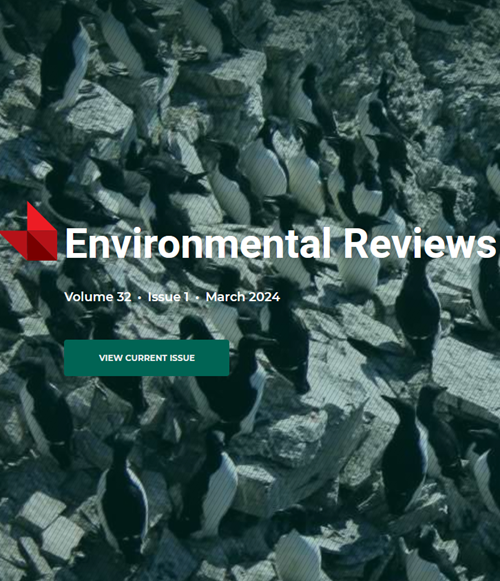气候变化对流域营养动态的影响:来自世界各地的见解
IF 5.1
3区 环境科学与生态学
Q2 ENVIRONMENTAL SCIENCES
引用次数: 2
摘要
这项研究是对全球水文营养动态文章的荟萃分析,以确定以下方面的趋势和共识:(1)气候变化引起的水文和温度驱动因素对营养动态的影响,以及这些影响如何沿着从陆地到河流再到湖泊的集水区连续体变化;(2) 气候变化影响与营养动态方面的其他人为压力(农业、城市化)的趋同;以及(3)气候变化对不同气候区营养动态和水质损害影响的区域变异性。一个创新的网络爬虫工具被用来帮助批判性地综合文献中的信息。文献表明,气候变化将影响全球的营养动态,并加剧当代水质挑战。在极端降水的推动下,预计全球养分浸出和陆上径流输送将增加。径流的季节性变化预计将模拟不断变化的降水模式,但气候变化对水文和养分动态的具体局部影响将随季节和区域变化。如果温度升高引起的植物对养分吸收的预期增加能够补偿更高的氮磷矿化、氮沉积和浸出率,那么植物活动可能会减少非农业土壤中的部分负荷。高温林草火灾可能通过有机物的热解改变氮的形态,从而有助于减少矿化和微生物周转。在侵蚀风险较高的农业地区,极端降水将加剧现有的水质问题,植物养分吸收量的增加可能导致化肥使用量的增加。未来的城市扩张将扩大这些影响。更高的环境温度将通过增强热分层、增加极端降水事件对溪流和湖泊的营养负荷、减少夏季流量和基流稀释能力,以及在日益频繁的干旱期间增加水和营养物的停留时间,促进有害的蓝藻水华。土地管理决策必须考虑本次审查中确定的细微的区域和季节变化(已实现和预测)。这些知识对于加强国际合作和加快行动以实现联合国的全球可持续性目标和COP26的具体目标至关重要。本文章由计算机程序翻译,如有差异,请以英文原文为准。
Impact of climate change on catchment nutrient dynamics: insights from around the world
This study is a meta-analysis of global articles on hydrological nutrient dynamics to determine trends and consensus on (1) the effects of climate change-induced hydrological and temperature drivers on nutrient dynamics and how these effects vary along the catchment continuum from land to river to lake; (2) the convergence of climate change impacts with other anthropogenic pressures (agriculture, urbanization) in nutrient dynamics; and (3) regional variability in the effects of climate change on nutrient dynamics and water-quality impairment across different climate zones. An innovative web crawler tool was employed to help critically synthesize the information in the literature. The literature suggests that climate change will impact nutrient dynamics around the globe and exacerbate contemporary water quality challenges. Nutrient leaching and overland flow transport are projected to increase globally, promoted by extreme precipitation. Seasonal variations in streamflow are expected to emulate changing precipitation patterns, but the specific local impacts of climate change on hydrology and nutrient dynamics will vary both seasonally and regionally. Plant activity may reduce some of this load in non-agricultural soils if the expected increase in plant uptake of nutrients prompted by increased temperatures can compensate for greater N and P mineralization, N deposition, and leaching rates. High-temperature forest and grass fires may help reduce mineralization and microbial turnover by altering N speciation via the pyrolysis of organic matter. In agricultural areas that are at higher risk of erosion, extreme precipitation will exacerbate existing water quality issues, and greater plant nutrient uptake may lead to an increase in fertilizer use. Future urban expansion will amplify these effects. Higher ambient temperatures will promote harmful cyanobacterial blooms by enhancing thermal stratification, increasing nutrient load into streams and lakes from extreme precipitation events, decreasing summer flow and thus baseflow dilution capacity, and increasing water and nutrient residence times during increasingly frequent droughts. Land management decisions must consider the nuanced regional and seasonal changes identified in this review (realized and predicted). Such knowledge is critical to increasing international cooperation and accelerating action toward the United Nations's global sustainability goals and the specific objectives of the COP26.
求助全文
通过发布文献求助,成功后即可免费获取论文全文。
去求助
来源期刊

Environmental Reviews
环境科学-环境科学
自引率
3.50%
发文量
45
期刊介绍:
Published since 1993, Environmental Reviews is a quarterly journal that presents authoritative literature reviews on a wide range of environmental science and associated environmental studies topics, with emphasis on the effects on and response of both natural and manmade ecosystems to anthropogenic stress. The authorship and scope are international, with critical literature reviews submitted and invited on such topics as sustainability, water supply management, climate change, harvesting impacts, acid rain, pesticide use, lake acidification, air and marine pollution, oil and gas development, biological control, food chain biomagnification, rehabilitation of polluted aquatic systems, erosion, forestry, bio-indicators of environmental stress, conservation of biodiversity, and many other environmental issues.
 求助内容:
求助内容: 应助结果提醒方式:
应助结果提醒方式:


